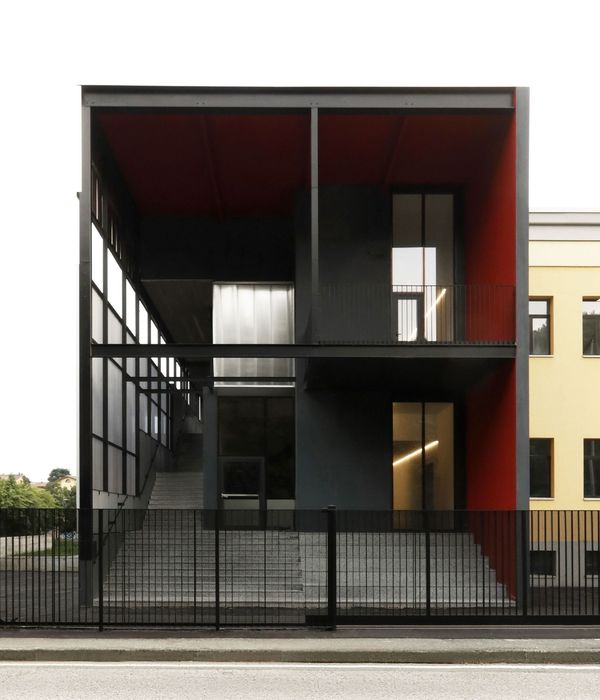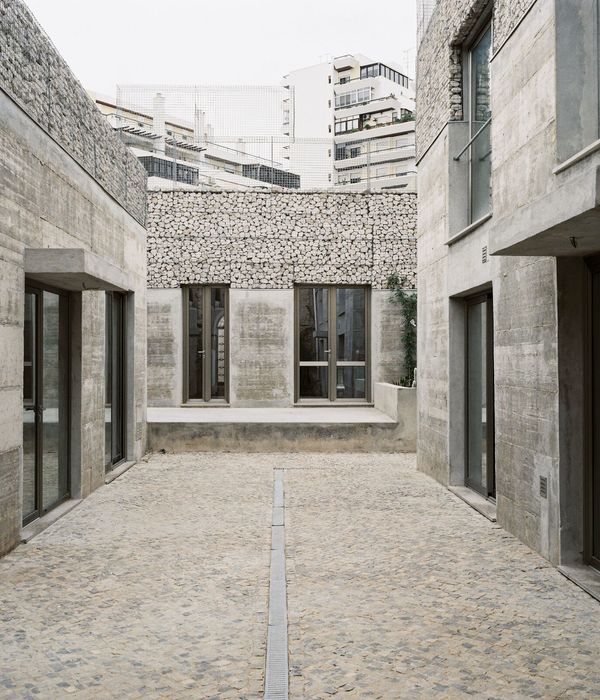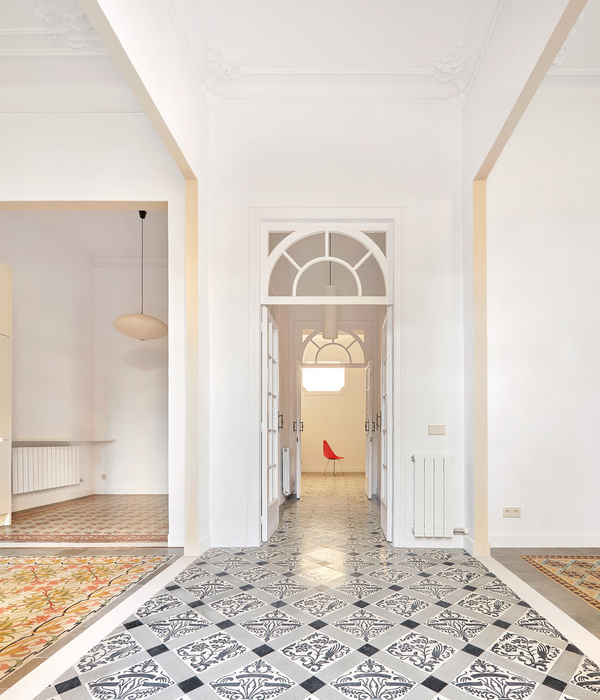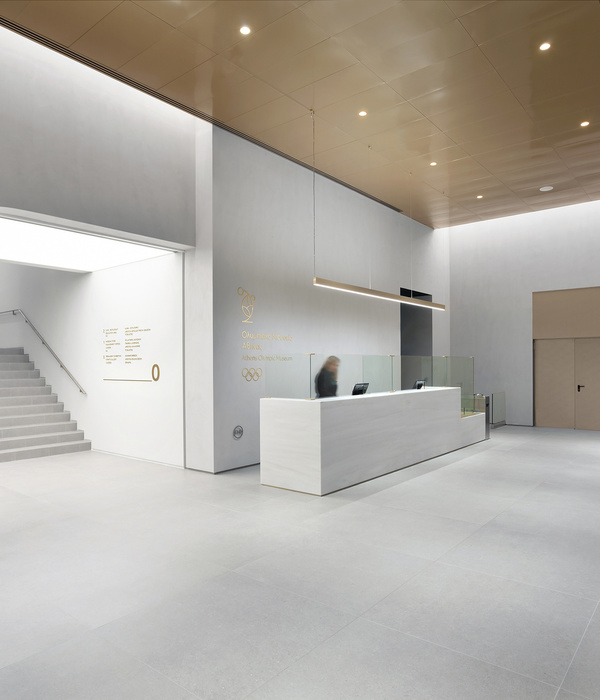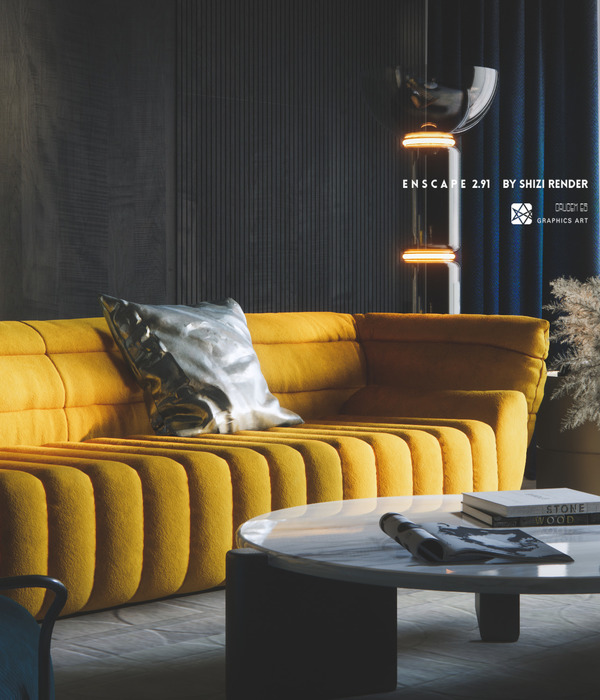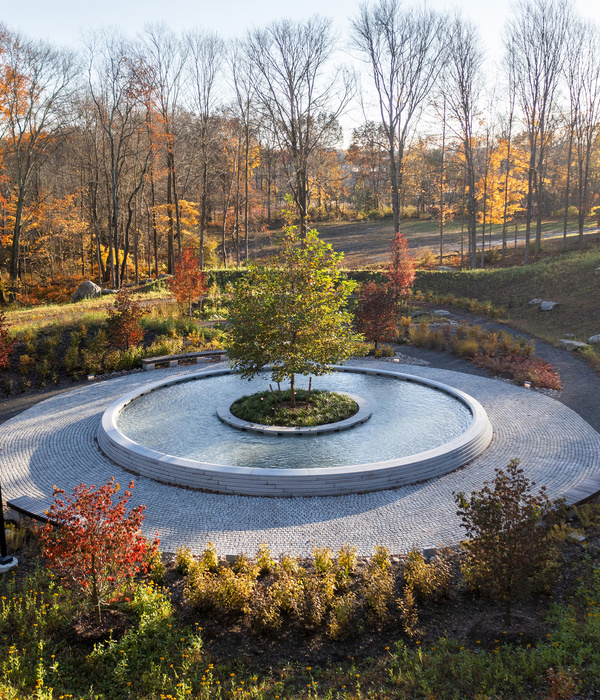“生态穹顶”自然科学博物馆坐落于加拿大蒙特利尔,由当地建筑事务所 KANVA 设计改造。KANVA 事务所以天马行空的创意与超越建筑形式本身的项目作品而闻名,本项目则旨在带领游客沉浸在多重生态系统的真实环境中。项目的前身为 1976 年奥运会建造的室内自行车赛场,后改造为“生态穹顶”自然科学博物馆,自 1992 年对外开放以来逐渐成为最受欢迎的博物馆之一,堪称加拿大博物馆界最耀眼的明珠。2014 年,Rami Bebawi 和 Tudor Radulescu 共同创立的 KANVA 事务所赢得了该博物馆改造的国际建筑竞赛,承接下了这个由蒙特利尔生命空间协会组织(Space for Life)发起的耗资 2500 万美元的大型项目。建筑改造范围的包括:生态穹顶、天文馆、昆虫馆和植物园。
KANVA, a Montreal-based firm renowned for meaningful projects extending beyond the boundaries of architectural shapes and forms, is proud to unveil the delicate grandeur of the newly redesigned Biodome, a Montreal science museum that immerses visitors in the authentic environs of multiple ecosystems. Housed in the former Velodrome, constructed for the Montréal 1976 Olympic Games, the Biodome opened in 1992 and is a jewel in the crown of a consortium of facilities that collectively account for the most visited museum spaces in Canada. After winning an international architectural competition in 2014, KANVA, co-founded by Rami Bebawi and Tudor Radulescu, was commissioned for the $25 million project by Space for Life, the body charged with overseeing operations of the Biodome, Planetarium, Insectarium, and Botanical Garden.
博物馆外观概览,appearance of the museum©KANVA
“我们的任务是增强游客和博物馆独特生态系统之间联系,使游客们获得身临其境的体验,同时改造建筑的公共空间,使整个博物馆空间更加完备。”KANVA 联合创始人兼项目首席建筑师 Rami Bebaw 说道,“在这个过程中,我们可以自豪地说‘生态穹顶’给人们提供了一个接触并了解复杂自然环境的平台,特别是在当前气候变化的大背景下,认识到人与自然间的相互影响则显得更为重要。”
“Our mandate was to enhance the immersive experience between visitors and the museum’s distinct ecosystems, as well as to transform the building’s public spaces,” notes Rami Bebawi, a partner of KANVA and the project’s lead architect. “In doing so, we proudly embraced the role that the Biodome plays in sensitizing humans to the intricacies of natural environments, particularly in the current context of climate change and the importance of understanding its effects.”▼入口与入口广场,entrance and the entrance plaza©KANVA
项目之初,KANVA 事务所就对原始建筑进行了深入的分析与研究,“生态穹顶”就宛如一个由生态系统与维持这个系统正常运行的复杂机械结构共同组成的生命体。因此,任何类型的设计干预都应该是精巧而微妙的,在此前提下,再由统一的全局策略对这些微观的干预措施进行统筹管理与协调。设计过程中每一个决定都需要经过跨学科的协商,可以说,KANVA 事务所为“生态穹顶”设计的故事线是一个真正的合作过程。
From the onset, KANVA studied the tremendous complexity of the building, a living entity comprised of ecosystems and very complex machinery that is critical to supporting life. They realized that any type of intervention would need to be very delicate, and that a global strategy to the scale of the mandate would require careful coordination and management of numerous micro interventions. Every decision required consultations across multiple disciplines, and it became a truly collaborative effort that embraced KANVA’s storyline.
概念生成平面示意图,concept diagram©KANVA
"项目中的每个人都对全局策略有着深入的理解,他们本着合作的精神把这种理解融会贯通。"Bebawi 说,"这是一次非常鼓舞人心的经历,它将成为我们在未来设计中更好地解决环境问题的范本。"
从组织的角度来看,KANVA 致力于利用空间改造将建筑遗产价值最大化。建筑师将入口原有的低矮天花板拆除,并重新设计了一个富有视觉冲击力的核心空间,这种设置打开了游客们的视野,为人们留下深刻的第一印象。
拆除天花板后,室内向天空开放,将人们的视线引向建筑非凡的屋顶,同时,巨大的玻璃天窗也将充足的自然光线引入室内。
"Everybody understood the global vision, and they carried that understanding with them in the spirit of collaboration," says Bebawi. "It was a very inspirational experience that will serve as a model for better addressing environmental issues in design in the future."
From an organizational perspective, KANVA began by targeting spaces that could be transformed in ways that would maximize the value of the building’s architectural heritage. The carving of a new core combined with the demolition of the particularly low ceiling at the entrance of the building allows visitors to appreciate the impressive scale of the existing space.
In gutting the existing ceiling, KANVA opened the space skyward to the building’s extraordinary roof, composed of massive skylight panels that infuse an abundance of natural light.
▼剖面示意图,concept section©KANVA
庞大的开放空间构成了博物馆中各个展览区域的核心。参数化设计的墙体宛如“活体”皮肤一般包裹住不同的生态系统空间,自由流畅的形态引导着游客们探索不同空间中蕴藏的小世界。参数化墙体的结构工程异常复杂,因此,这些预制纯白“生态表皮”的安装过程是一个积极艰巨的任务,没有任何容错的余地。首先要利用材料的弹性将白色表皮固定在弯曲的铝制龙骨上,再通过张力、悬臂以及三角梁结构将制作好的墙体构件安装在主要的钢结构上。墙体结构中还设有机械连接节点,以适应各种构件的形态变化,并有利于现场调整。
With a massive open space now forming the core between the ecosystems, KANVA parametrically designed a living skin that they could wrap around the ecosystems, and which would serve as a guiding accompaniment to visitors. With exceptionally complicated structural engineering, the installation of the prefabricated pure white, biophilic skin was a monumental task. With no room for error, the skin was curved and stretched around a bowed aluminum structure, using tension, cantilevering, and triangular beams for suspension, and itself anchored to a primary steel structure. Mechanical junctions were also incorporated in order to accommodate a variety of movements and allow for on-site adjustments.
前台接待,reception area©KANVA
▼大面积的天窗为大厅引入了充足的自然光线,Large skylights bring plenty of natural light to the lobby ©KANVA
▼纯白的膜结构墙壁与原有的混凝土结构形成鲜明的对比,The white membrane walls contrast sharply with the original concrete structure©KANVA
▼自由流畅的曲线引导着人们探索不同空间,Free flowing curves guide people to explore different spaces ©KANVA
▼空间与结构细部,Spatial and structural details©KANVA
▼大厅中的座椅细部,Seating details in the lobby ©KANVA
半透明的表皮与上方的天窗和谐互动,倾斜的天际线营造出一种平静且无穷的空间氛围。全新的核心空间也放大了游客的感官体验,引导着人们从纯粹的中立空间过渡到四周丰富的参观空间,“这个核心中庭长达 500 米,几乎有四层楼高,可以说是一个强而有力的空间工具。”Rami Bebawi 解释道,“这个空间极具象征意义,纯净的白色完美地突出原有的混凝土结构,并与其形成鲜明的对比。”
The translucent skin harmoniously interacts with the skylights above, with beveled horizons that elicit a sense of calm and infinity. The new core also amplifies the sensorial experience of visitors transitioning from its pure neutrality to the multi-sensorial discovery of its adjacent ecosystems. “It’s a very powerful tool, half a kilometer in length and rising nearly four storeys,” explains Rami Bebawi. “It’s extremely emblematic of the space, and the white purity beautifully highlights and contrasts the original structural concrete.”▼不同生态展示区之间的公共空间,Public space between different ecological exhibition areas ©KANVA
▼咖啡厅与悬挂在天花板上的标语,Cafe and signs hanging from the ceiling ©KANVA
▼建筑的玻璃幕墙与内部白色膜结构体块之间形成走廊,A corridor is formed between the building’s glass curtain wall and the internal white membrane structure ©KANVA
项目的核心理念专注于参观过程本身,因此,建筑师为博物馆设计了新的参观通道,旨在将现有的线性发现之旅转变为更动态的参观过程,在这里,游客可以自行规划游览路线。“生态穹顶”中共容纳了五个不同生态系统空间,其中包含超过 250,000 种动物和 500 种植物。从概念上来说,KANVA 希望为游客们营造出更为身临其境的感官体验,因此,设计将注意力集中在感官上,将视觉置于声音、嗅觉和触觉之后。从宁静的接待大厅开始,游客们跟随着流动的洁白墙面进入一个 10 米长的隧道,然后达到中央核心区,神奇的自然之旅即将从这里开始,他们将探索五个生态系统区域,包括热带雨林区,劳伦特枫树林区,圣劳伦斯湾区,亚南极群岛区和拉布拉多海岸区。
KANVA then focused on the journey itself, designing new passages aimed at transforming the existing linear path of discovery into a more dynamic experience, where visitors take charge of their own journeys through the Biodome’s five ecosystems, housing more than 250,000 animals and 500 plant species. Conceptually aiming for a more immersive experience, KANVA focused its attention on soliciting senses, relegating sight to the end of the line behind sound, smell, and touch. From the calming lobby hall, the undulating living skin funnels visitors into a 10-meter tunnel leading to the central core, where their exploration of five ecosystems, including Tropical Rainforest, Laurentian Maple Forest, Gulf of St. Lawrence, Sub-Antarctic Islands, and Labrador Coast, begins.
Hidden and implicit passageways and entrances©KANVA
通道与入口细部,Access and entry details ©KANVA
▼由通道望向天空,viewing the sky from the passage©KANVA
倾斜的地面成为入口通道最独特的特征,这种设置营造出一种微妙的空间氛围,旨在通过狭长的白色通道来减缓人们移动的步伐,并为新鲜的感官输入留出空间,起到欲扬先抑的效果。当游客们到达中央核心区后,半透明的膜结构墙体映入眼帘,这些宛如可以“呼吸”一般的墙体引导着人们进入不同生态空间的入口,这个过程被 KANVA 称为“生态运输”。“生态运输”系统的终端即是每个生态空间入口的自动门,门上的珠帘阻隔了人们的视线,为入口增添了一丝神秘而含蓄的气息。穿过珠帘,眼前的景致豁然开朗,人们将沉浸在动物自然栖息地的气候,气味和声音之中。在亚南极群岛区的入口,KANVA 设计了一个冰隧道作为过渡区,使游客们可以逐步适应极地寒冷的环境,海雀和企鹅的叫声与冰雪的气味顺着隧道飘入人们的耳膜和鼻腔,利用额外的感官刺激勾起了人们强烈的好奇心与参观欲望。
The entry tunnel features a very subtle floor incline, intended to slow the pace of movement through a compressed white passage, and to void the mind for fresh sensory input. Once visitors reach the central core, smaller slits in the living skin, called eco-transits, lead them towards the ecosystem entrances. As automatic doors at the end of the eco-transit open into the ecosystem, it remains visually obstructed by a curtain of beads. By the time visitors pass through the beads, they have been exposed to the climate, smells, and sounds of the natural habitat before seeing anything. At the entrance of the Subpolar Regions, KANVA designed a new ice tunnel that acclimatizes visitors during the transition, while the sounds and smells of puffins and penguins ahead provide additional sensory stimulation.
亚南极群岛区的入口冰隧道,The entrance ice tunnel to the Subpolar Regions ©KANVA
在垂直方向上,KANVA 利用架空的步道,在生态系统空间的上方增添了全新的参观空间,在步道上,游客可以信步于热带雨林之间,或者与圣劳伦斯湾生态系统的雄伟树木近距离接触。架空的步道通向一个全新的夹层,在这里人们可以俯瞰整个博物馆空间。新的夹层也作为技术层,设有互动教育展览,以及各种沉浸式科普教学设施,使人们了解到各个精密的生态系统空间是如何在大自然之中运作的。
Vertically, KANVA added an entire new level above the ecosystems, accessible via walkways enabling visitors to move through the foliage of majestic trees of both the Tropical Rainforest and Gulf of St. Lawrence ecosystems. The walkways lead to a new mezzanine, offering aerial views of the various ecosystems and the pure white nucleus. The new mezzanine also serves as a technical floor, with interactive educational exhibits and insight into the elaborate machinery required to preserve the facility’s delicate ecosystems.
▼夹层空间概览,overall of the mezzanine©KANVA
▼由夹层俯瞰底层空间,viewing the ground floor from the mezzanine©KANVA
▼夹层设有互动教育展览,interactive educational exhibits on the mezzanine©KANVA
▼互动式科普教学设施,Interactive science teaching facilities©KANVA
项目中,KANVA 为企鹅们设计了一个新的水池,在开始设计之前,建筑师们花了数周时间与生物学家和兽医一起,以了解企鹅的游泳模式。此外,为了使观景台更为贴近真实的自然生态环境,使游客可以身临其境般地在海狸的自然栖息地观察它们,建筑师还特别研究并灵活运功了海狸的“建造能力”。在这里,海狸为筑巢“加工”的树枝,经过晾晒,变身成空间的内部装饰,营造出真实的自然环境氛围。
Before designing a new water basin for the facility’s resident penguins, KANVA staff spent weeks with biologists and veterinarians in order to gain insight into the specie’s swimming patterns. To provide an authentic feel to an observation point where visitors can observe beavers in their natural habitat, the firm studied the architectural prowess of the beavers. The idea emerged to let the beavers carve the wood themselves, which was then dried and used to line the interior of the space.
▼专门为企鹅设计的水池,pool designed specifically for penguins ©KANVA
▼海狸筑巢用的树枝成为室内墙壁的装饰,The interior walls are decorated with beaver nesting branches ©KANVA
▼模拟动物自然栖息地的观景平台,viewing platform that mimics the animals’natural habitat©KANVA
"设计一个有生物居住的生态环境空间的前提是不断的学习与谦逊的态度,"Bebawi 解释道,"当我们设计人居空间时,将自己带入情境的基本假设是理所当然的,然而当为水獭或树懒设计的时候,就需要重新学习。"本项目的设计经历为 KANVA 事务所的建筑事业添上了浓墨重彩的一笔,这个学习的过程推进了他们对建筑的进一步探索。对 KANVA 事务所来说,建筑不应成为人与外界环境的阻隔,而应成为人与自然和谐共处的环境。
“Before you can even begin to design in an environment with living species all around you, education and a notion of humbleness are required,” explains Bebawi. “We take basic assumptions about ourselves for granted when we design for other human beings, but designing for an otter or a sloth requires that you re-educate yourself.” The entire experience has enriched KANVA’s journey as an architectural firm. The educational process has advanced their exploration of how buildings, rather than being barriers to external forces, can be rendered more permeable as harmonious cohabitations between humans and nature.
▼“穹顶”中共有超过 250,000 种动物和 500 种植物,ore than 250,000 animals and 500 plants live in the‘Biodome’©KANVA
Bebawi 还补充说:“‘生态穹顶’以一种令人耳目一新的方式将人们重新与环境联系起来,我们为自己的贡献感到自豪。6 年间,这个项目为我们提供宝贵的知识,为我们未来的项目提供了创新的方法,让我们认识到建筑能够成为促进环境变化与发展的工具。”
“We need to reconnect people with the environment, and the Biodome does that in a refreshing way that we are proud to have contributed to,” adds Bebawi. “This project has provided us with six years of invaluable knowledge, preparing us for new and innovative approaches to future projects where architecture becomes a tool to promote and facilitate environmental change.”▼天窗的结构在夹层地面投下丰富的光影,The skylight structure casts rich shadows on the mezzanine floor ©KANVA
▼底层平面图,plan – level 200©KANVA
▼夹层平面图,plan level -400 ©KANVA
▼剖面图,sections©KANVA
▼节点构造,construction details©KANVA
CREDITS KANVA: Design Architect, Quebec Architect, Coordinating Architect, Project Manager. In collaboration with NEUF architect(e)s Bouthillette Parizeau inc.: Electromechanical engineer NCK inc.: Structural Engineer THE TEAM OF COLLABORATORS Groupe GLT+: Building code specialist and cost consultant Atelier 6: Specification writer LightFactor: Lighting design consultant La bande à Paul: Collaborating exhibition designer Anick La Bissonnière: Collaborating set designer Nathalie Matte: Collaborating museologist Bélanger Design: Wayfinding specialist Topo 3D: Land surveyor Soft dB: Acoustics specialist
{{item.text_origin}}

